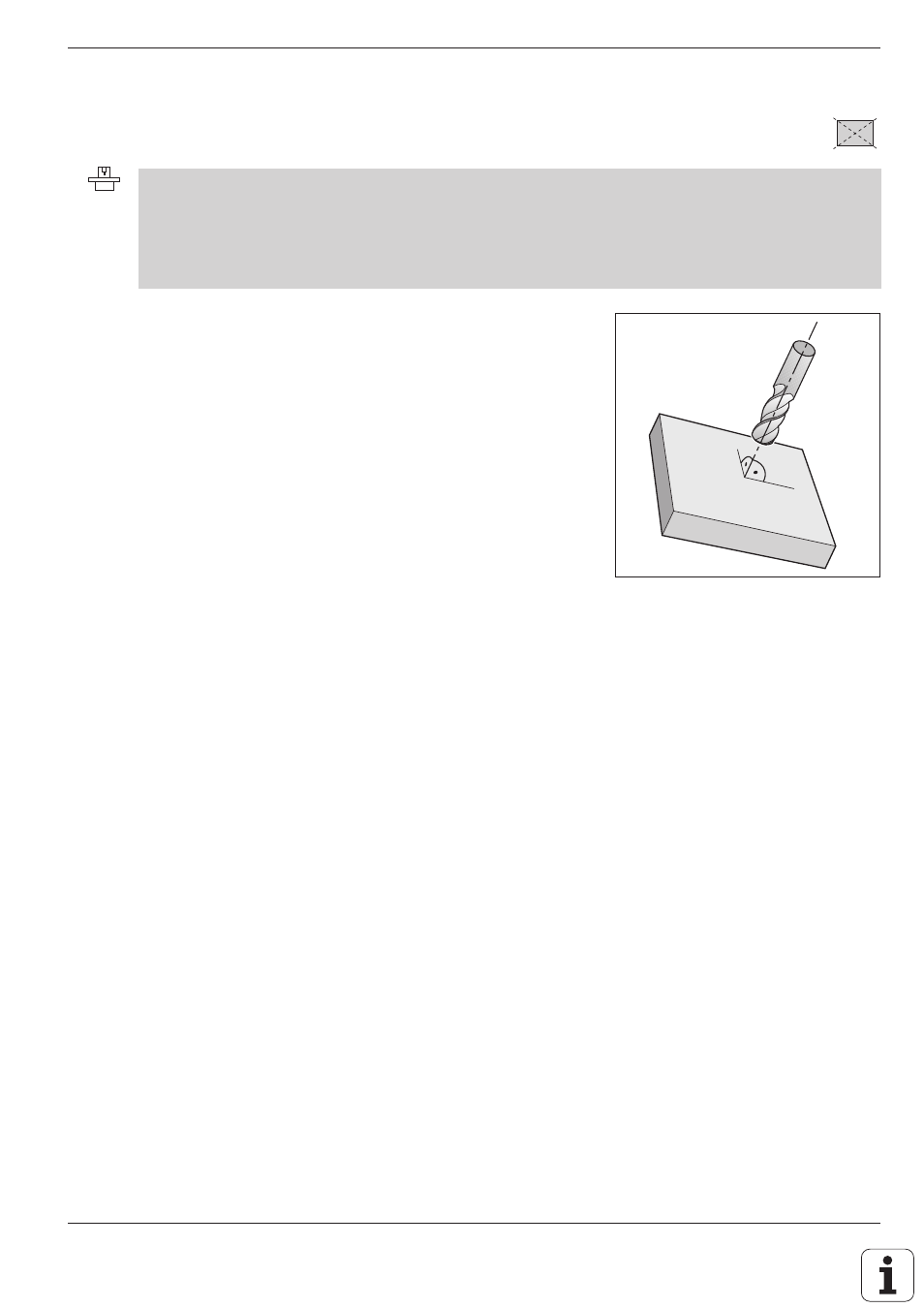Working plane (g80) -55 – HEIDENHAIN TNC 407 (280 580) ISO Programming User Manual
Page 275

8-55
8
Cycles
TNC 426/TNC 425/TNC 415 B/TNC 407
Fig. 8.54:
Pre-position the tool perpendicular
to the tilted plane
407
WORKING PLANE (G80)
The functions for tilting the working plane are interfaced to the TNC and the machine tool by the machine manufac-
turer.
The following additional note applies to the TNC 426:
On some machines with swivel heads/tilting tables, the machine manufacturer determines whether the angles
programmed in the cycle are interpreted as coordinates of the tilt axes or as solid angles. Your machine manual
provides more detailed information on this subject.
The TNC supports machine tools with swivel heads (the tool is tilted)
and/or tilting tables (the workpiece is tilted).
The program is written as usual in a main plane, such as the X/Y plane, but
is executed in a plane that is tilted relative to the main plane.
Typical applications:
• Oblique holes
• Contours in an oblique plane
There are two ways to tilt the working plane:
• 3D ROT soft key in the MANUAL OPERATION and ELECTRONIC
HANDWHEEL operation modes (see page 2-24)
• Cycle G80 WORKING PLANE in the part program
The tilting functions are coordinate transformations. The transformed tool
axis (i.e., as calculated by the TNC) always remains parallel to the actual
tool axis (the axis being positioned). The working plane is always
perpendicular to the direction of the tool axis.
When tilting the working plane, the TNC differentiates between two
machine types:
• Machines with tilting tables
• Machines with swivel heads
Machines with tilting tables:
• You must bring the workpiece into the desired position for machining
by positioning the tilting table, for example with a G00 block.
• The position of the transformed tool axis does not change in relation
to the machine-based coordinate system. Thus if you rotate the table—
and therefore the workpiece—by 90° for example, the coordinate
system does not rotate. If you press the Z+ axis direction button in
the MANUAL OPERATION mode, the tool moves in Z+ direction.
• In calculating the transformed coordinate system the TNC considers
only the mechanically influenced offsets of the particular tilting table
(the so-called “translational” components).
